Hidden Challenges Faced by Seniors Managing Chronic Conditions Alone

Introduction
As the global population ages, an increasing number of seniors are managing multiple chronic health conditions independently. While many are capable of maintaining their health with proper self-management, numerous hidden challenges impede their ability to do so effectively. These challenges encompass physical, social, and systemic barriers that often go unnoticed but significantly impact health outcomes. This article explores the multifaceted hurdles faced by seniors living with chronic diseases alone and examines strategies to address these issues, ultimately aiming to improve aging well and preserving independence.
Physical and Cognitive Limitations Impacting Self-Management
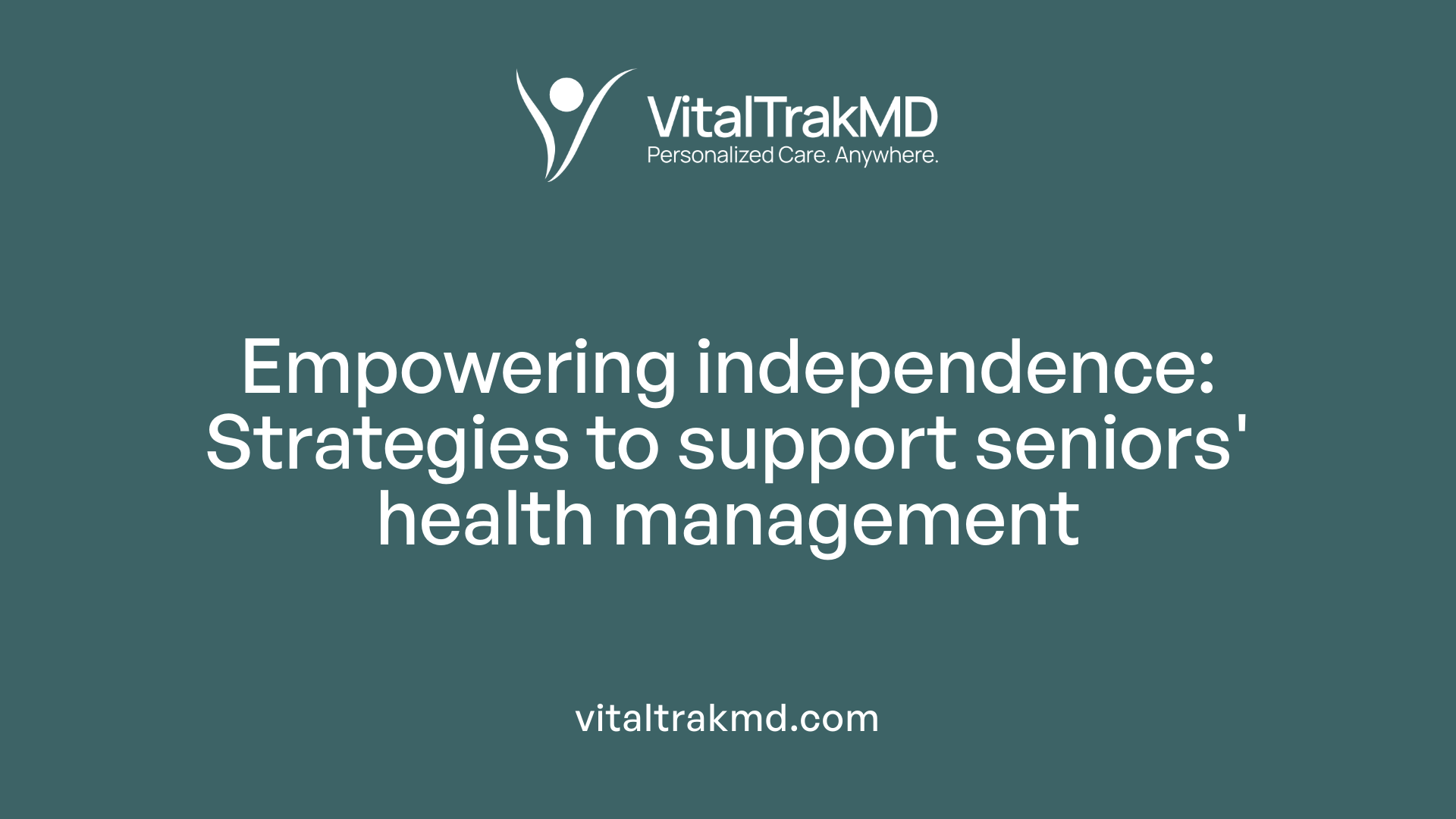
How do aging and chronic diseases impact a senior's ability to manage their health independently?
As people age, their physical and cognitive abilities naturally decline, and the presence of chronic diseases adds further obstacles to self-care. Many older adults experience decreased mobility, vision, or hearing impairments, which can make routine activities like taking medications, preparing healthy meals, or maintaining personal hygiene more difficult.
Chronic conditions such as diabetes, hypertension, and heart disease often require complex management routines, including regular medication intake, monitoring symptoms, and lifestyle modifications. When combined with cognitive decline, seniors may forget doses, mismanage appointments, or struggle with understanding health instructions, impairing their ability to stay on top of their health needs.
Multimorbidity, or the coexistence of multiple chronic illnesses, increases this challenge. It complicates treatment plans, raises the risk of medication interactions, and demands careful coordination among healthcare providers. Geriatric syndromes like frailty, falls, and delirium further threaten independence by increasing the likelihood of hospitalizations and long-term care placement.
Social factors compound these health-related issues. Isolation, limited socioeconomic resources, and living environments with accessibility barriers can restrict access to essential healthcare and support services. For example, lacking transportation options can prevent routine medical visits, leading to unmanaged health conditions.
While adopting healthy behaviors and preventive strategies can delay or reduce some declines, most seniors need tailored interventions. Integrated healthcare approaches that combine medical, social, and community support are vital. These include regular health assessments, medication management, assistive devices, home modifications, and social engagement programs.
In sum, aging and chronic diseases diminish physical and cognitive capacities, making independent health management more complex. Addressing these multifaceted challenges requires a comprehensive strategy aimed at maintaining functionality and autonomy in older adults.
Social Isolation and Emotional Well-Being
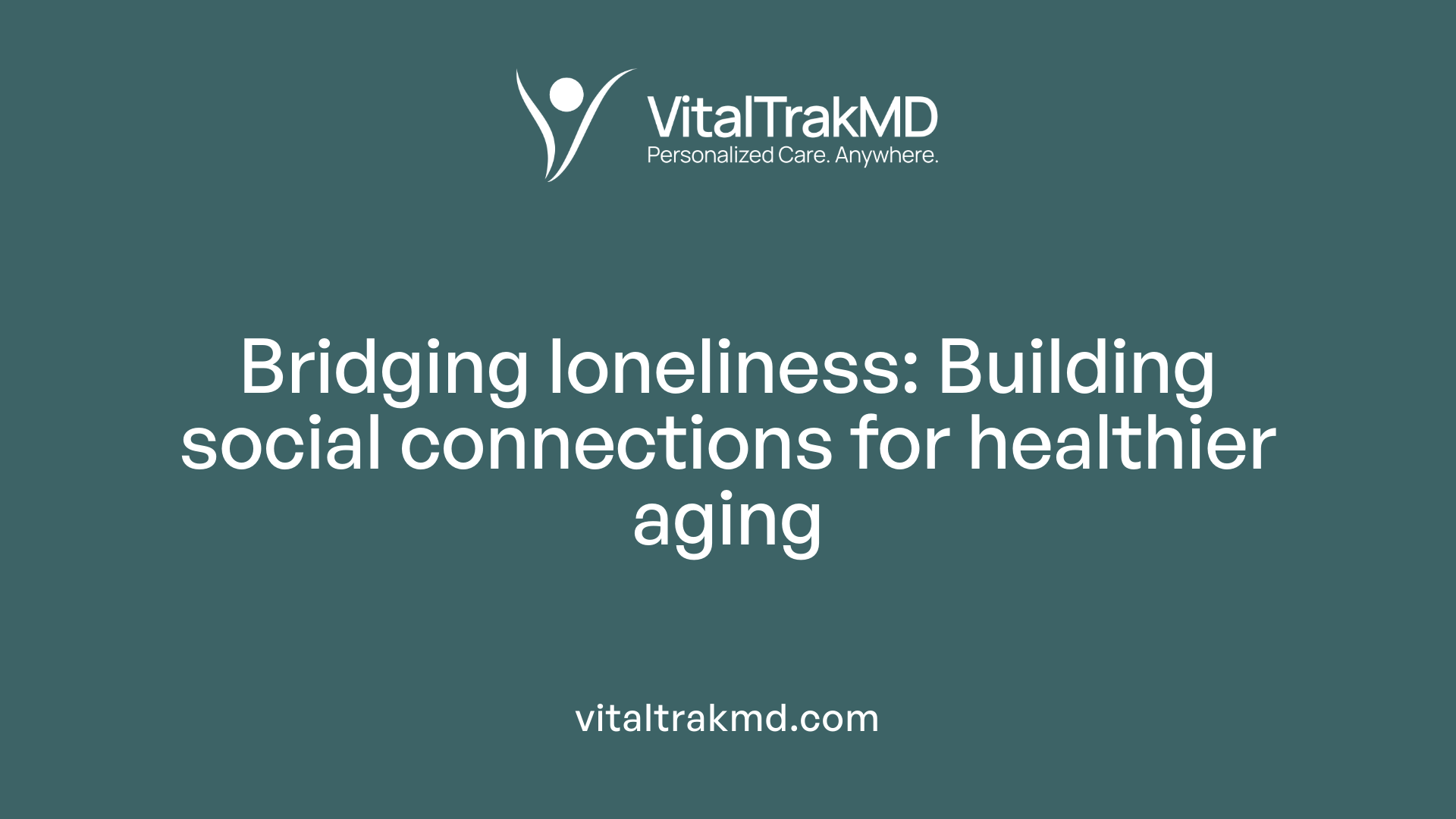
What social and emotional issues, such as loneliness and social isolation, affect seniors with chronic conditions?
Many older adults living with chronic diseases face profound social and emotional challenges, including loneliness and social isolation. Loneliness is a distressing feeling of being alone or separated, while social isolation refers to the lack of social contacts and participation in meaningful interactions.
These issues are common among seniors with conditions like hypertension, diabetes, arthritis, and mental health disorders such as depression and dementia. Such social disconnection can lead to increased feelings of sadness, anxiety, and a sense of meaninglessness. Mental health problems are not just emotional concerns; they also tend to worsen physical health outcomes, complicate disease management, and increase the risk of hospitalizations and mortality.
Factors like loss of mobility, hearing or vision impairment, living alone, and experiences of discrimination further contribute to social withdrawal. Additionally, stressful life changes such as bereavement or retirement can diminish social support networks, worsening emotional well-being. Addressing these issues involves fostering social connections and providing emotional support, which is vital for holistic health.
Impact of social disconnection on health
The effects of loneliness and social isolation extend beyond emotional distress. Research shows they are linked to higher risks of cardiovascular diseases, depression, cognitive decline, and even mortality. For seniors, social disconnection can lead to decreased motivation to maintain healthy behaviors, decreased physical activity, and poorer medication adherence.
Lack of social contacts can cause a decline in cognitive functions and mental health, which further hampers disease management. Studies have found that socially isolated and lonely older adults are more likely to experience adverse health events and require emergency care or admission to nursing homes.
Factors increasing social isolation risk
Several elements increase the likelihood of social isolation among older adults:
- Loss of mobility and sensory impairments
- Living alone or in remote areas
- Financial struggles restricting social activities
- Lack of transportation options
- Major life events such as bereavement or health issues
- Experiences of discrimination or social stigmatization
These factors can hinder seniors' ability to participate in communities or maintain social bonds, elevating their vulnerability to loneliness.
Strategies to mitigate loneliness
Proactive measures can help reduce feelings of loneliness and enhance social engagement:
- Encouraging participation in community activities and hobbies
- Utilizing communication technologies like video calls and social media to stay connected
- Supporting living arrangements that promote social interaction, such as shared housing
- Developing trust with caregivers and healthcare providers
- For seniors with dementia, establishing routines for communication and joining support groups can foster connection
- Promoting awareness among caregivers and family members about the importance of social ties
Incorporating these strategies can significantly improve quality of life, mental health, and even physical health outcomes for seniors facing social disconnection.
| Aspect | Description | Additional Notes |
|---|---|---|
| Loneliness | Emotional distress of feeling alone | Can occur even when surrounded by others |
| Social isolation | Lack of social contacts | Often measurable by frequency of social interactions |
| Health risks | Increased heart disease, depression, cognitive decline | Worsened by persistent loneliness and isolation |
| Contributing factors | Mobility issues, living alone, discrimination | Can be addressed by community outreach and support |
| Mitigation methods | Social activities, technology use, trust-building | Critical for holistic senior care |
Addressing social and emotional issues is vital for the health and happiness of older adults. Creating supportive environments and fostering social connections can mitigate the negative impacts of loneliness and social isolation, ultimately leading to healthier aging.
Systemic and Environmental Barriers to Self-Care
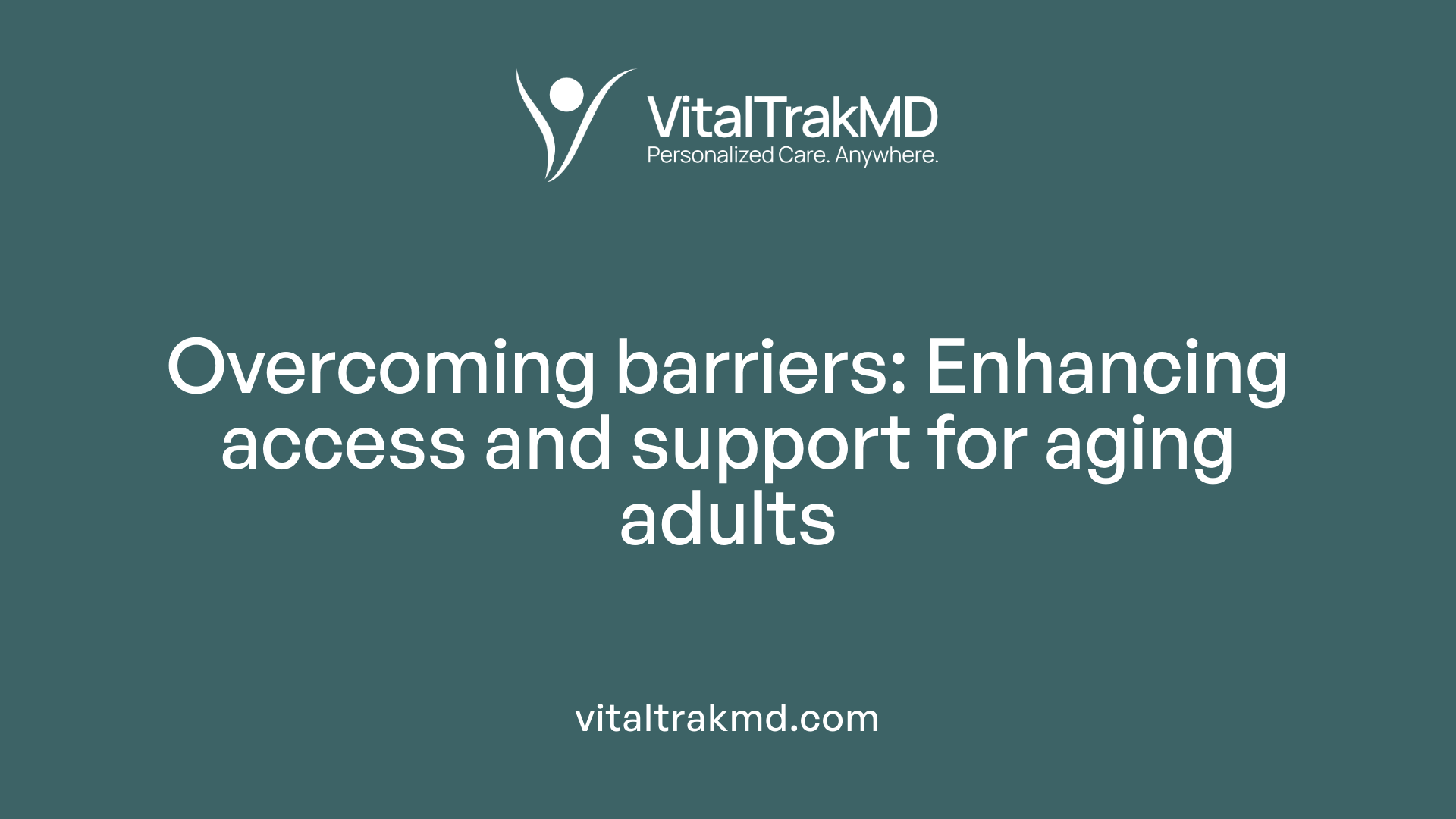
What barriers do seniors face when managing chronic conditions on their own, and what factors can facilitate better management?
Older adults often encounter several obstacles that make managing chronic health conditions challenging. Physical symptoms such as mobility limitations, eyesight, and hearing problems can restrict their ability to access care or perform daily health-related activities.
Cognitive decline and low health literacy may lead to misunderstandings about medication instructions, treatment plans, or health recommendations. This can increase the risk of improper medication use, missed appointments, and neglected health monitoring.
Transportation and mobility issues are common barriers, especially for seniors living alone or in areas with limited public transit options. Without reliable transportation, attending medical appointments or accessing pharmacy services becomes difficult, which can compromise ongoing care.
Financial hardships also present a significant challenge. The high costs of medications, healthcare visits, and assistive devices can prevent seniors from obtaining necessary treatments or maintaining adequate health management routines.
In addition, health literacy and communication difficulties can hinder understanding of medical advice, particularly when healthcare providers do not offer culturally sensitive or age-appropriate information. Language barriers and complex medical terminology can further complicate effective communication.
Technology adoption is another hurdle. Older adults may resist adopting new health technologies due to privacy concerns, lack of familiarity, or perceived complexity. This resistance can limit access to innovative tools such as telemedicine, medication reminders, and remote monitoring devices.
Social support networks play a crucial role in overcoming these barriers. Assistance from family members, caregivers, and community services provides practical help, emotional support, and encouragement to adhere to treatment regimens.
Access to healthcare resources, including community clinics, mobile health services, and culturally competent care providers, facilitates better management efforts. Ensuring these services are easily reachable and user-friendly is vital.
Technological solutions designed with seniors in mind—such as simple interfaces, voice-activated devices, and remote consultation options—can significantly improve their engagement and self-care capacity.
Building trusting relationships with healthcare providers through shared decision-making and respectful communication fosters confidence and adherence to treatment plans.
In summary, addressing these individual, social, and systemic barriers while promoting supportive facilitators can markedly enhance seniors' ability to manage their chronic health conditions effectively.
| Barrier Category | Specific Challenges | Facilitators and Solutions |
|---|---|---|
| Physical and Cognitive | Mobility issues, vision/hearing problems, cognitive decline | Assistive devices, home modifications, cognitive training |
| Health Literacy | Understanding medical instructions, navigating care plans | Clear communication, culturally sensitive health education |
| Transportation & Mobility | Access to healthcare facilities and pharmacies | Community transport programs, telehealth services |
| Financial Constraints | Affording medications and healthcare services | Subsidies, insurance coverage, sliding scale clinics |
| Technology Adoption | Resistance or unfamiliarity with digital health tools | User-friendly designs, training sessions, tech support |
| Communication & Relationships | Trust and understanding with healthcare providers | Patient-centered care, involving seniors in decision-making |
By recognizing these barriers and implementing targeted strategies, we can improve health outcomes and quality of life for older adults as they manage chronic disease life.
The Role of Technology and Community Resources
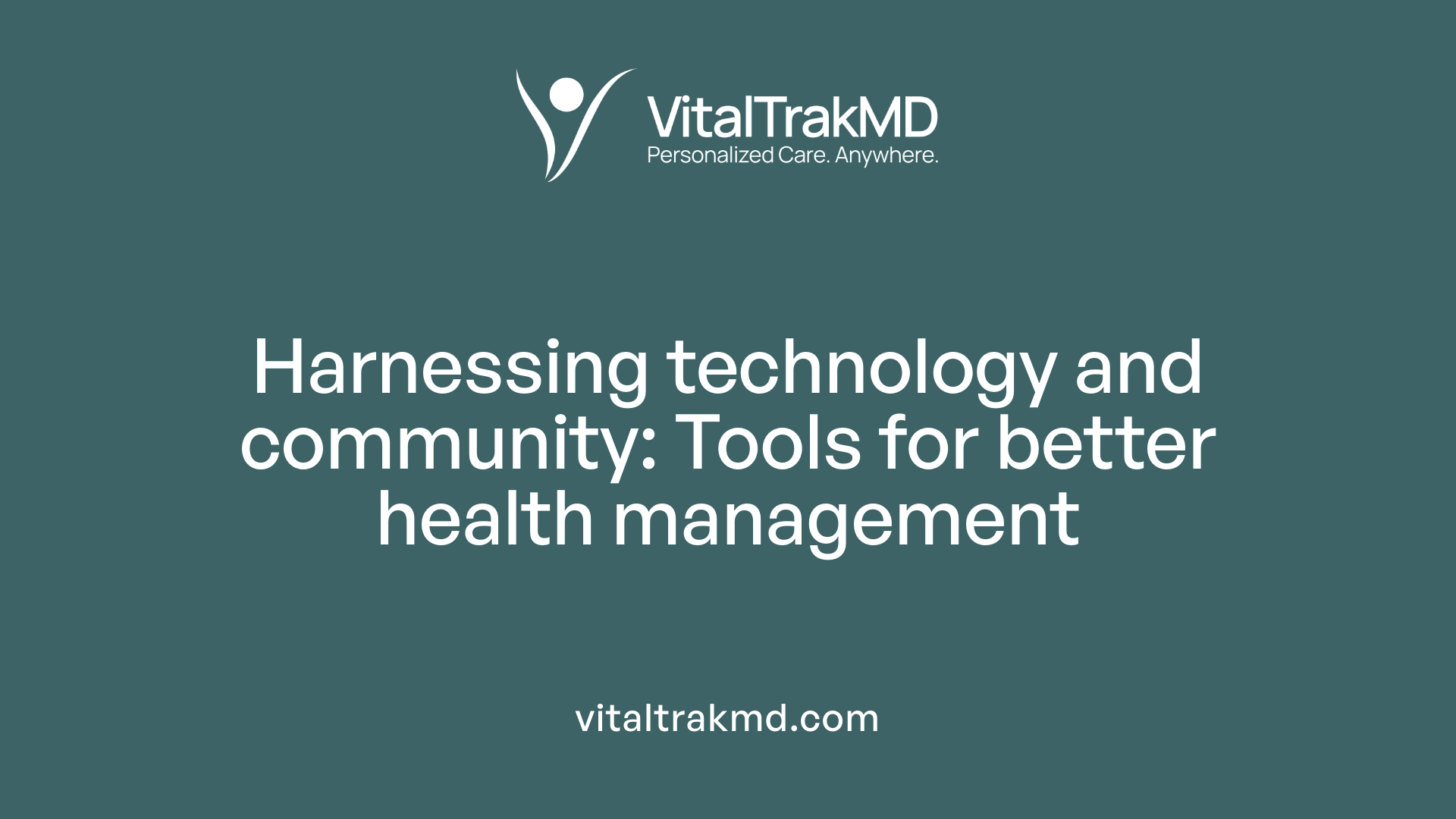
What resources and strategies can support seniors in managing their health more effectively?
Supporting older adults in health management involves a combination of technology, community engagement, and personalized care approaches. Telehealth services and remote monitoring allow seniors to consult healthcare providers from home, reducing the need for travel and facilitating continuous health oversight.
Assistive technologies, such as pill timers, GPS alerts, voice assistants, and video calling devices, empower seniors to maintain independence and stay connected with loved ones and healthcare teams. These tools help manage medications, monitor health conditions, and enhance communication.
Community-based programs and social networks play a crucial role in combating loneliness and promoting active lifestyles. Local senior centers, support groups, and organized activities foster social connections, encourage physical activity, and provide educational resources tailored to aging populations.
Accurate and reliable online health information is essential for empowering older adults. Academic and government sources should be prioritized over unreliable platforms like YouTube, ensuring seniors access trustworthy guidance for managing their health.
A comprehensive strategy involves engaging with community programs that offer social engagement activities, utilizing telehealth and assistive devices for daily health management, and seeking high-quality online information. Such an integrated approach addresses the physical, emotional, and social dimensions of aging, promoting independence and improving quality of life.
| Resource Type | Examples | Benefits |
|---|---|---|
| Telehealth & Remote Monitoring | Virtual doctor visits, wearable health trackers | Continuous health oversight, reduced travel |
| Assistive Technologies | Pill timers, GPS alerts, voice assistants | Medication adherence, safety, connectivity |
| Community Programs | Senior centers, social groups, exercise classes | Social support, physical activity |
| Online Health Info | Reputable websites, academic publications | Accurate health knowledge |
The combination of technological tools, community involvement, and access to credible information equips older adults to navigate health challenges more confidently, fostering healthier, more independent aging.
Public Health Challenges and Policy Implications
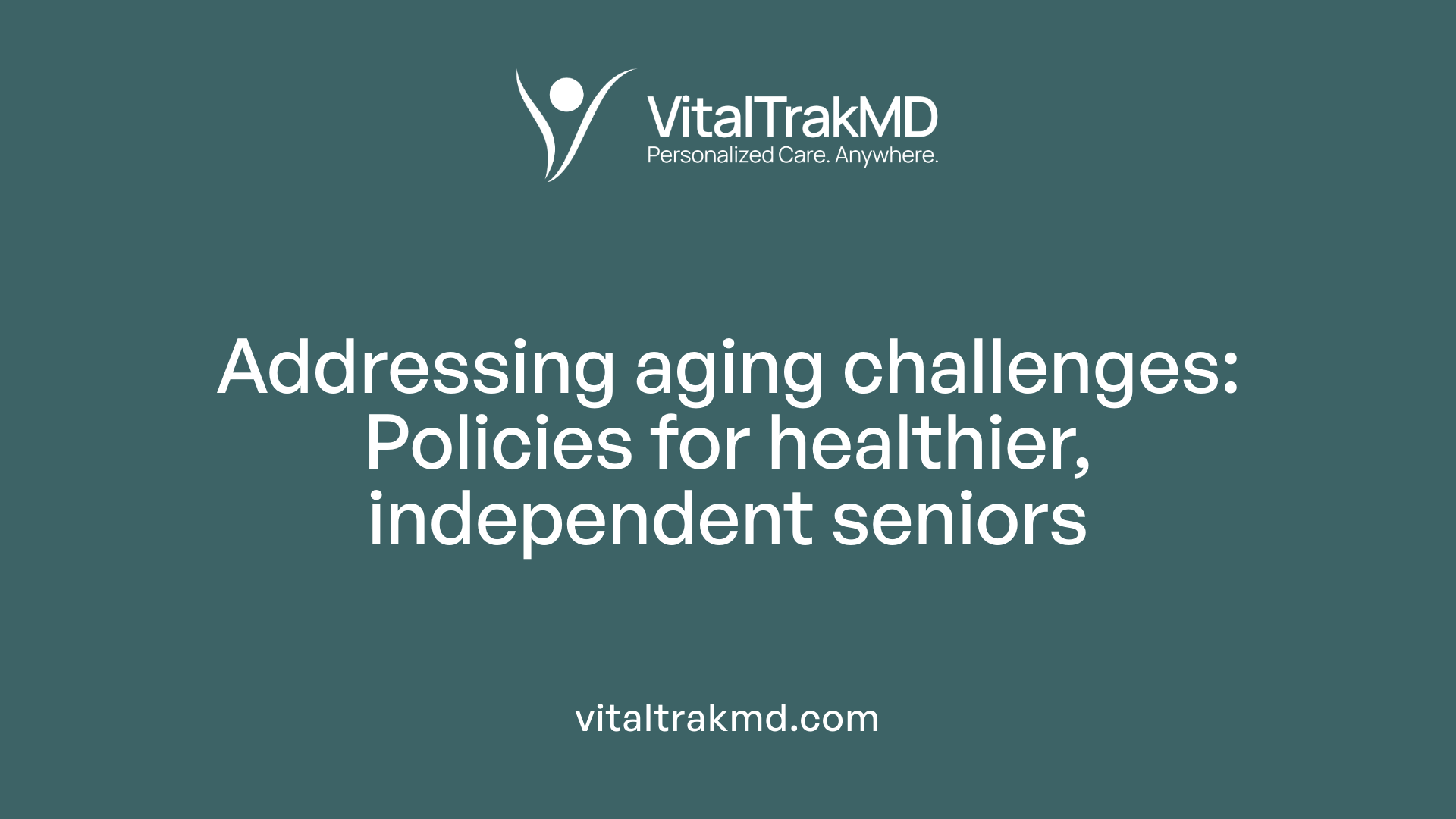
How do broader public health challenges related to aging populations influence chronic disease management?
The increasing number of older adults worldwide presents significant public health challenges that impact the management of chronic diseases. As the aging population grows, so does the prevalence of conditions such as hypertension, diabetes, arthritis, and dementia. These chronic illnesses often occur together, creating complex health profiles that require continuous, multifaceted care.
Healthcare systems are under pressure due to the higher demand for medical services, long-term care, and specialized healthcare workers. This strain can lead to disparities in access to quality care, especially among socioeconomically disadvantaged groups or those living in rural areas. Older adults with social isolation, mobility issues, or financial struggles are at greater risk of unmet healthcare needs.
Moreover, these challenges extend beyond medical treatment to include social determinants like income, education, and social support networks. Addressing social isolation, for example, is vital because it is linked to worse health outcomes and increased healthcare utilization, such as emergency room visits and nursing home admissions.
Public health policies must adapt to these realities through a variety of strategies. Promoting preventive care, such as regular health screenings and vaccination programs, helps catch conditions early and manage them effectively. Improving health literacy enables older adults and their caregivers to better understand and manage their health needs.
Community-based interventions that foster social participation and support independence are equally important. For instance, technology-assisted solutions like telecare, video consultations, and health monitoring devices facilitate greater connectivity and management for seniors living alone or with mobility challenges.
In summary, the public health response to aging populations must be comprehensive, addressing both medical and social factors. Policies should focus on creating age-friendly healthcare environments, enhancing health education, and ensuring equitable access to services, thereby promoting healthy aging and reducing the burden of chronic diseases.
| Aspect | Challenges | Policy Responses | Additional Notes |
|---|---|---|---|
| Disease prevalence | Rising rates of chronic diseases | Expand preventive programs, improve early detection | Adaptation to demographic shifts |
| Healthcare system | Resource strain, workforce shortages | Increase workforce capacity, invest in training | Use of technology for efficiency |
| Disparities | Socioeconomic, racial, geographic gaps | Targeted interventions, equitable access | Support marginalized populations |
| Social isolation | Increased risk of negative outcomes | Foster community programs, social engagement | Use of digital communication tools |
| Multi-morbidity | Complex care needs | Integrated care models, multidisciplinary teams | Focus on personalized treatment plans |
Implications for Healthcare Practice and Policy
How can insights into these challenges inform healthcare strategies or policies to improve elderly health management?
Understanding the complexities faced by the aging population is essential for shaping effective healthcare policies. This includes recognizing the high prevalence of multiple chronic conditions, such as hypertension, diabetes, and chronic kidney disease, which require ongoing management and specialized care.
Social factors like mobility loss, financial struggles, and social isolation significantly impact health outcomes. Policies that incorporate social determinants of health can help create a more supportive environment for seniors, reducing disparities and promoting independence.
In addition, workforce shortages and care fragmentation pose barriers to delivering comprehensive care. Training healthcare providers specifically in geriatric care, emphasizing multidisciplinary approaches and primary care integration, can enhance service quality.
Legislative actions, such as expanding telehealth services and investing in long-term care infrastructure, are crucial. Implementing community-based interventions and preventive screenings—like mammograms and bone density tests—align with national strategic frameworks aiming to improve aging health.
By fostering coordinated, person-centered care, policies can ensure smoother communication among patients, families, and providers. Encouraging patient empowerment through education about medication management and self-care further enhances health outcomes.
Ultimately, applying these insights leads to sustainable, equitable policies that support aging populations in maintaining health, independence, and quality of life.
Conclusion
Managing chronic health conditions alone presents numerous hidden challenges for seniors that extend beyond medical management. Physical limitations, social isolation, environmental barriers, and systemic healthcare issues all contribute to complex barriers that threaten the independence and well-being of older adults. Addressing these issues requires a multi-layered approach encompassing technological support, community engagement, healthcare system reforms, and social policies aimed at fostering healthy aging. By recognizing and tackling these hidden challenges, healthcare providers, policymakers, caregivers, and communities can work together to support seniors in leading healthier, more autonomous lives, ensuring that aging in place remains a viable and dignified option for all.
References
- Loneliness and Social Isolation — Tips for Staying Connected
- Editorial: Aging and chronic disease: public ...
- Learn How to Efficiently Manage Chronic Illnesses in Seniors
- How older adults can manage chronic conditions
- Mental health of older adults
- How Chronic Illness Impacts Mental Health in Older Adults
- Experiences of Social Isolation in Older Adults with Chronic ...
- Chronic Disease & Mental Health In Seniors
- Social Well-Being, Psychological Factors, and Chronic ...
- Self-Management of Multiple Chronic Conditions by ...
Recent articles
Want to Feel Better and Live Healthier?
Join hundreds of patients taking control of their health with personalized care that fits their life – not the other way around.
Rated 4.8/5 by 32+ customers







